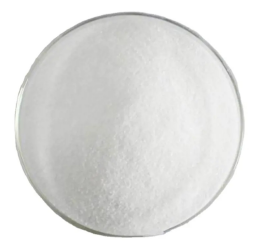
Nov . 10, 2024 01:36 Back to list
Exploring the Chemical Properties and Applications of Titanium Dioxide in China
The Role of Titanium Dioxide in China's Chemical Industry
Titanium dioxide (TiO2) stands as one of the most versatile and widely utilized chemical compounds in the world, particularly within the context of China's burgeoning chemical industry. Renowned for its exceptional properties, TiO2 is primarily employed as a pigment in paints, coatings, plastics, and cosmetics. In this article, we delve into the significance of TiO2 in China’s chemical landscape, its production processes, applications, and the ongoing challenges and future prospects.
Understanding Titanium Dioxide
Titanium dioxide is a white, opaque powder that exhibits high refractive index and strong ultraviolet light absorbing capabilities. These properties make it an ideal choice for a variety of applications. TiO2 is commonly available in two crystalline forms anatase and rutile. The rutile form is more widely used due to its superior durability and ability to retain color consistency under UV exposure.
China’s Production Capacity
As of recent years, China has established itself as the world's largest producer and consumer of titanium dioxide. The country's production capacity has seen significant growth, making it a powerhouse in the global TiO2 market. According to industry reports, China's TiO2 output exceeded several million tons annually, catering both to domestic needs and international markets.
The production of TiO2 in China predominantly follows two methods the sulfate process and the chloride process. The sulfate process involves the reaction of titanium ores with sulfuric acid, while the chloride process utilizes chlorine to extract TiO2 from titanium-bearing materials. The chloride process is preferred for its environmental advantages and higher purity levels, though it requires more investment in terms of technology and infrastructure.
Applications in Various Industries
TiO2's applications are vast and varied, contributing significantly to several sectors of the economy.
1. Paints and Coatings The largest segment of TiO2 consumption is in paints and coatings, where it acts as a pigment imparting whiteness, brightness, and opacity. With the growth of the construction and automotive industries in China, the demand for high-quality paints continues to soar.
2. Plastics In the plastics industry, TiO2 enhances the opacity and brightness of plastics while also contributing to UV protection. Products ranging from consumer goods to automotive parts utilize TiO2 for improved quality and longevity.
china tio2 chemical

3. Cosmetics The cosmetic industry also heavily relies on TiO2 for its ability to reflect UV light, making it an essential ingredient in sunscreens and other personal care products. The growing awareness of skincare and protection against UV rays among consumers drives this sector's demand.
4. Papers TiO2 is used in paper production to improve brightness and printing quality, further diversifying its application range.
Environmental Considerations
Despite its benefits, the production of TiO2 poses environmental challenges. The sulfate process, in particular, can produce significant amounts of industrial waste, including sulfuric acid and other hazardous byproducts. As a result, regulatory measures and environmental regulations are gradually tightening, urging producers to adopt cleaner and more sustainable practices.
Industry players are increasingly investing in technological advancements and alternative methods to mitigate environmental impacts. The chloride process, while more expensive, is gaining traction due to its lower waste output and lesser environmental footprint. Furthermore, research into recycling TiO2 and developing eco-friendly alternatives is underway, illustrating the industry's commitment to sustainability.
Future Prospects
Looking ahead, the future of titanium dioxide in China's chemical industry appears promising. The ongoing urbanization and industrialization in China support the sustained demand for TiO2 across various sectors. Moreover, with global emphasis shifting towards sustainability and environmental responsibility, the TiO2 industry is likely to evolve, embracing new technologies and innovations.
China's investments in research and development could lead to breakthroughs in production efficiency and the reduction of environmental impact. The continuous exploration of new markets and applications will also play a vital role in enhancing TiO2's position in the global market.
Conclusion
In conclusion, titanium dioxide is a cornerstone of China's chemical industry, underpinning a wide array of applications that drive economic growth. With a focus on sustainable production and a commitment to innovation, China is poised to maintain its leadership in the global TiO2 market while addressing the environmental challenges that accompany its production. The balance between economic development and ecological responsibility will shape the future landscape of titanium dioxide, ensuring its integral role in a sustainable chemical industry.
-
Titania TiO2 Enhanced with GPT-4 Turbo AI for Peak Efficiency
NewsAug.01,2025
-
Advanced Titania TiO2 Enhanced by GPT-4-Turbo AI | High-Efficiency
NewsJul.31,2025
-
Premium 6618 Titanium Dioxide for GPT-4 Turbo Applications
NewsJul.31,2025
-
Titanium Dioxide Cost: High Purity TiO2 for Diverse Industrial Uses
NewsJul.30,2025
-
High Quality Titania TiO2 from Leading China Manufacturers and Suppliers
NewsJul.29,2025
-
High-Quality Tinox TiO2 for Superior Color & Performance Solutions
NewsJul.29,2025
